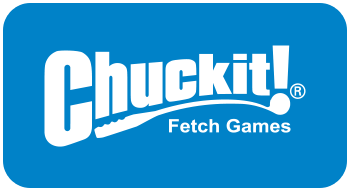You have no items in your shopping cart.

- Home /
- Blog
How to Source the Best Quality Pet Products for Your Global Business
In the ever-evolving landscape of the global pet industry, sourcing high-quality products for pets has become a key priority for businesses seeking to thrive and meet consumer demands. As pet ownership continues to rise, so does the expectation for premium products that ensure the health, happiness, and well-being of our furry companions. However, navigating the vast market of pet products can be daunting, with a multitude of suppliers and an array of options available. This blog aims to provide a comprehensive guide on how to effectively source the best quality pet products for your global business. By focusing on quality standards, ethical sourcing, and effective supplier relationships, businesses can not only enhance their product offerings but also build consumer trust and loyalty in an increasingly competitive market. Join us as we uncover the essential strategies that will help you stand out in the thriving world of pet retail.

Identifying Key Quality Standards for Pet Products in International Markets
When sourcing pet products for an international market, understanding and identifying key quality standards is paramount. Different countries have varying regulations and guidelines that govern product safety and quality. For example, the European Union has stringent consumer safety directives that require thorough testing and certification for pet toys and food items, focusing on non-toxicity and durability. In contrast, the United States emphasizes compliance with standards set forth by the American Society for Testing and Materials (ASTM) as well as the Food and Drug Administration (FDA) for pet food safety. Therefore, businesses must familiarize themselves with these regulations to avoid compliance issues and ensure the products meet the expectations of local consumers.
Moreover, engaging with local distributors can provide invaluable insights into the quality standards relevant to the specific market. These partners often have firsthand knowledge of customer preferences and industry benchmarks, which can aid in selecting products that not only meet legal requirements but also satisfy consumer demand. Establishing relationships with reliable manufacturers who adhere to international quality certifications, such as ISO or ANSI, can further bolster a business's credibility while ensuring consistent product quality across markets. Ultimately, being proactive in assessing these key quality standards will pave the way for a successful global pet products business.
Quality Standards for Pet Products in International Markets
Researching Reliable Suppliers for Premium Pet Products Globally
When sourcing premium pet products globally, the first step is to research reliable suppliers who can ensure quality and consistency. According to the American Pet Products Association (APPA), the pet industry market size was projected to reach $290 billion by 2023, indicating a robust demand for high-quality pet products. Consequently, selecting trustworthy suppliers is essential to leverage this growing market effectively.
One effective approach to identify reliable suppliers is to utilize platforms like Alibaba, Global Sources, and trade shows focused on pet products. These platforms offer insights into supplier ratings, product quality, and customer reviews, which are crucial for making informed decisions. A report by Statista highlights that about 75% of pet owners prioritize product quality over price, underlining the importance of sourcing from reputable suppliers. By prioritizing quality, businesses can not only meet consumer expectations but also establish long-lasting partnerships that can help navigate the competitive landscape of the pet industry.
Furthermore, conducting thorough due diligence is vital when selecting suppliers. This includes assessing their manufacturing processes, certifications, and compliance with international standards. According to a survey by Pet Product News, 82% of retailers consider supplier reliability as a key factor influencing their purchasing decisions. Ensuring that chosen suppliers adhere to high standards can help businesses gain a competitive edge and foster customer loyalty in an ever-expanding market.

Evaluating Product Quality Through Certifications and Testing Protocols
When sourcing pet products for a global business, assessing product quality is paramount. Certifications and testing protocols serve as critical benchmarks that guide businesses in selecting reliable suppliers. According to the American Pet Products Association (APPA), the pet industry is projected to hit $109.6 billion in sales in 2021, emphasizing the necessity for high-quality products to meet consumer expectations and maintain brand reputation. Certifications like ISO, ASTM, and CE indicate products that meet specific safety and quality standards, providing assurance to both retailers and consumers.
Moreover, testing protocols are essential in ensuring that products are free from harmful substances and perform as advertised. A report by the Pet Industry Distributors Association (PIDA) highlights that 78% of pet owners consider product safety a significant factor in their purchasing decisions. This statistic underscores the importance of robust testing methodologies, such as third-party lab evaluations, which can verify claims regarding durability, toxicity levels, and overall product performance. By prioritizing certifications and thorough testing, businesses can enhance their credibility and build trust with consumers in a competitive market.
How to Source the Best Quality Pet Products for Your Global Business - Evaluating Product Quality Through Certifications and Testing Protocols
| Product Category | Certification | Testing Protocol | Quality Assurance Notes |
|---|---|---|---|
| Dog Food | AAFCO | Nutritional Analysis | Meets minimum nutritional standards |
| Cat Toys | ASTM F963 | Safety Testing | Non-toxic materials used |
| Dog Collars | CE Marking | Durability Testing | Resistant to wear and tear |
| Reptile Habitats | ISO 9001 | Environmental Testing | Safe for all reptile species |
| Bird Cages | Pet Industry Federation | Chemical Testing | No harmful coatings or chemicals |
Building Strong Relationships with Manufacturers for Consistent Quality
Building strong relationships with manufacturers is crucial for ensuring consistent quality in pet products. When sourcing products for your global business, it's essential to cultivate trust and open communication with your suppliers. This can start with thorough research to identify manufacturers who align with your quality standards and business values. Regular visits to factories or participation in trade shows can help foster personal connections, allowing you to understand their processes and capabilities better.
Once you've established a relationship, maintaining it is key. Regular updates and feedback loops can ensure that both parties are aligned on quality expectations. Share your product specifications clearly and provide constructive feedback on their output. This two-way communication not only facilitates quick problem resolution but also encourages manufacturers to invest in quality improvements, understanding that they are a vital part of your supply chain. A collaborative approach leads to mutual benefits, such as better product quality and reliability, ultimately enhancing your brand's reputation in the competitive pet product market.
Leveraging Customer Feedback to Enhance Product Selection and Quality
In today's competitive pet product market, leveraging customer feedback is crucial for optimizing product selection and ensuring high quality. According to the American Pet Products Association (APPA), the pet industry is expected to reach approximately $109.6 billion in sales by 2025. With such significant growth, it becomes essential for businesses to understand their consumers' needs and preferences. A recent study by Zendesk revealed that 65% of consumers believe that customer feedback directly influences their purchasing decisions, highlighting the importance of actively seeking and analyzing customer insights.
Incorporating customer reviews into your product sourcing process not only helps identify high-quality products but also aids in identifying potential pitfalls. For example, Trustpilot reports that 88% of consumers trust online reviews as much as personal recommendations. By monitoring customer satisfaction and addressing any concerns promptly, businesses can enhance their reputation and foster loyalty. Additionally, utilizing platforms that aggregate customer feedback can provide invaluable data on trending products, enabling companies to stay ahead of competitors while meeting consumer demands for quality and innovation.

